Rosco Cinefoil (http://www.rosco.com/us/video/cinefoil.asp) is a great medium for shaping light. Cinefoil is a heavy-duty, matte black aluminum foil. It’s used more in the film and video industry than in ours to gobo off lights, create snoots or barndoors, even to create a “cookie” to form shapes to throw shadows upon a background.
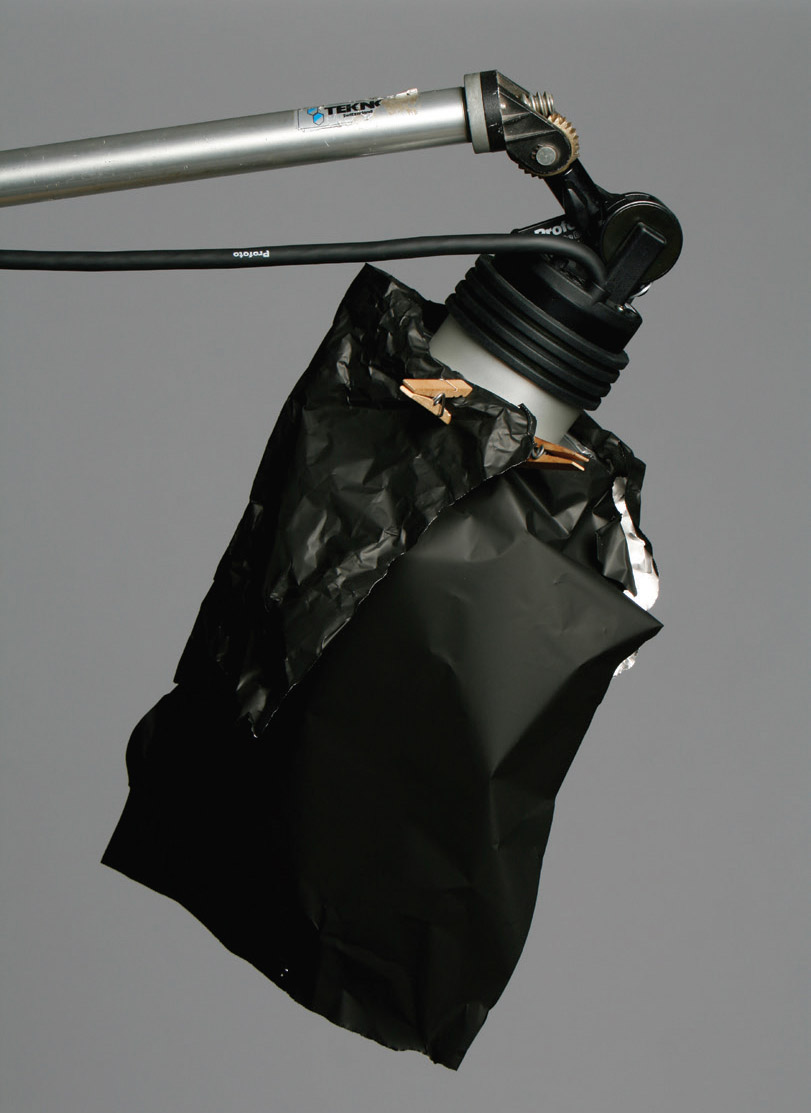
To form a makeshift snoot, I wrapped two of the original sections around a speed ring.
Cinefoil is an extremely durable product. I bought my roll at least 20 years ago and still have the original 6 feet of it, in sections, usable and certainly not worth tossing out.
Snoots
I made a snoot out of Cinefoil. The result of using a light with hard, directional shadows on only a small portion of the model (and against a background that would register no detail at all) was exactly what I wanted—moody and evocative, with an unexpected richness due to the mystery created by the light. To soften the focus, I used a piece of peach glitter organza fabric over the lens.
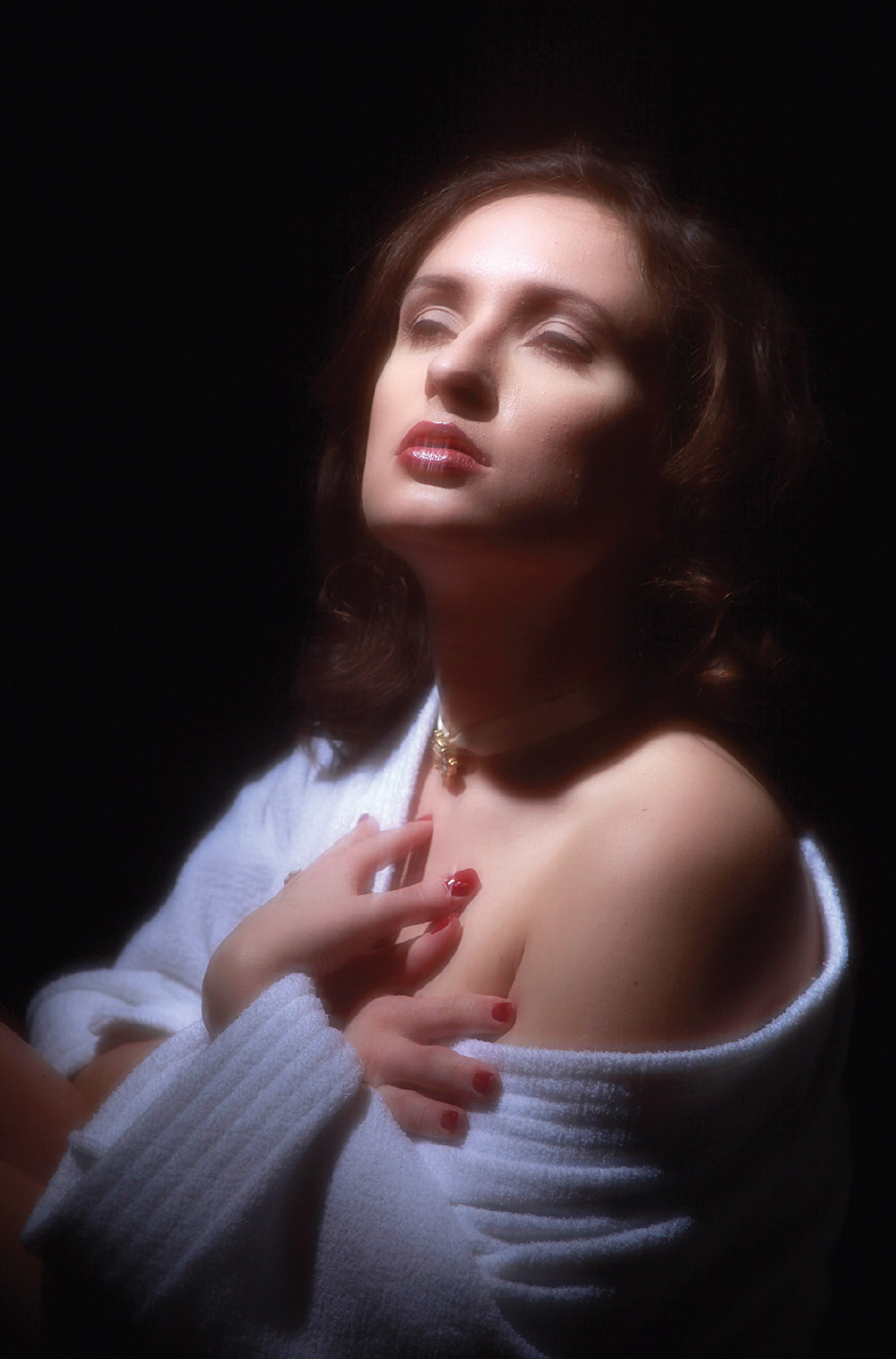
This glamourous look was produced with light from a snooted strobe and a piece of peach glitter organza over the lens.
Flags
I love the look of bare-tubed strobe and will often use it as a main light. Shadows are defined and deep. I can keep them that way or open them up by using a bookend reflector.
Since the bare tube will light the background evenly, it will not have dimension and will probably appear boring and dull. Hanging a piece of Cinefoil on an accessory arm easily creates a lightweight flag that allows me to selectively keep light off of the background, resulting in an alternative look that’s really quite attractive. You’ll notice that the Cinefoil is close to the strobe. As I do, you’ll want to cover more of the background than you actually need for the basic image, in case you feel like moving around a little bit. Be sure to use a second piece of the foil to block any light that falls on your lens. I left it out of this image so you could better understand the placement of the gear.
With the soft gradation from shadow to light, the diagonal placement of the Cinefoil creates graceful visual interest. Note the little bit of the subject’s shadow in the lower-left corner. It would have been easy to make it go away but, since there is only one light in play, I felt it lent more dimension to the image.
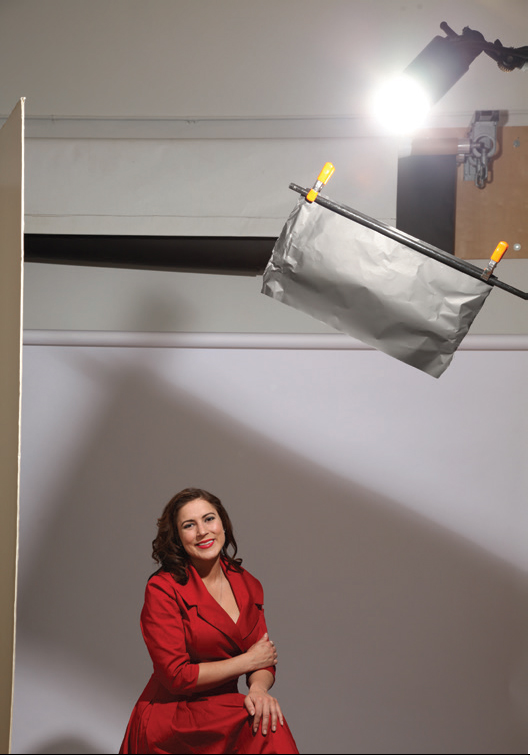
The lighting setup: I used a bare-tube strobe positioned at camera right and high overhead, then used a piece of Cinefoil to keep light off of a section of the background. A second piece of Cinefoil was used to keep light from striking the lens and producing flare.

The final image.
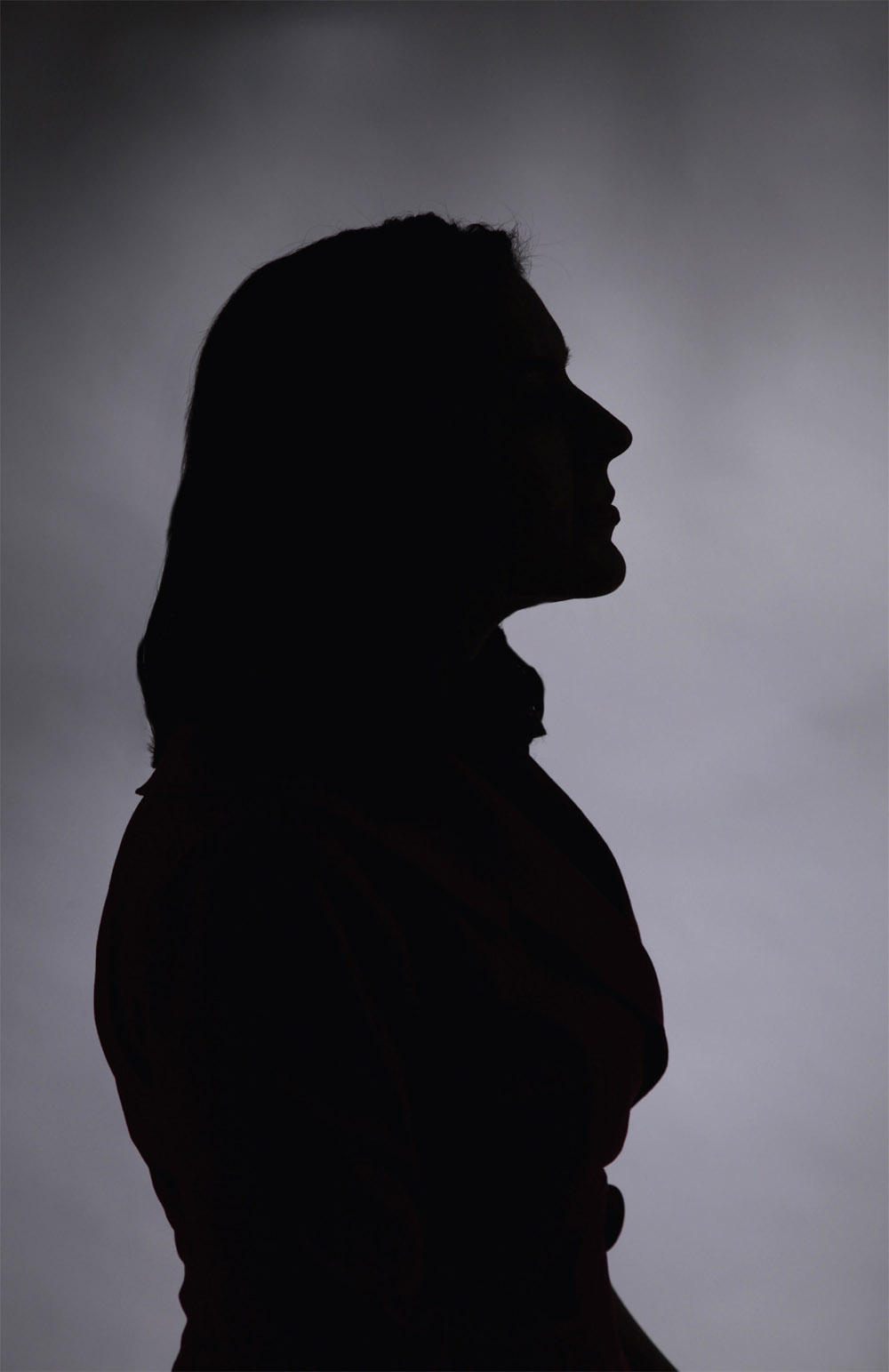
Formed or crumpled Cinefoil can create subtle background effects when used as a snoot.
I keep a number of small black foamcore cards in the studio to use as flags or gobos, keeping light away from areas where it’s not wanted. In some cases, the lightweight cards are too heavy for the job or can’t be bent into the necessary shape. Cinefoil is a perfect solution for this problem as it can be hung easily and weighs almost nothing.
A Modified Snoot Shape
Another use for Cinefoil is as a modifier for the background light itself. I clipped two pieces of it around a standard parabolic reflector to create a flexible snoot and then scrunched parts of it together. The snooted unit creates an interesting and unusual light pattern when it is aimed at the background.
Put a white background behind the subject and light it evenly or use a sheet of milk-white Plexiglas (see chapter 14). Create a long snoot by bringing two long sheets of Cinefoil together, wrapping them around a parabolic reflector, and connecting the sides (to keep light from spilling out) with tape or small spring clamps. Narrow the throw of the light by crimping the end with finger pressure and position the light as you wish. When metering, measure from the center of the snoot’s throw, as that is where the light will be brightest.
Open the snoot into a more perfect circle and move it into position. You may have to move the light closer to your subject and raise it to keep the edge of the snoot from intruding into the image. You’ll find that Cinefoil will throw a “spot” light with less edge falloff than that from a grid but will be slightly more difficult to control because the light will expand faster from a Cinefoil snoot than from a grid.
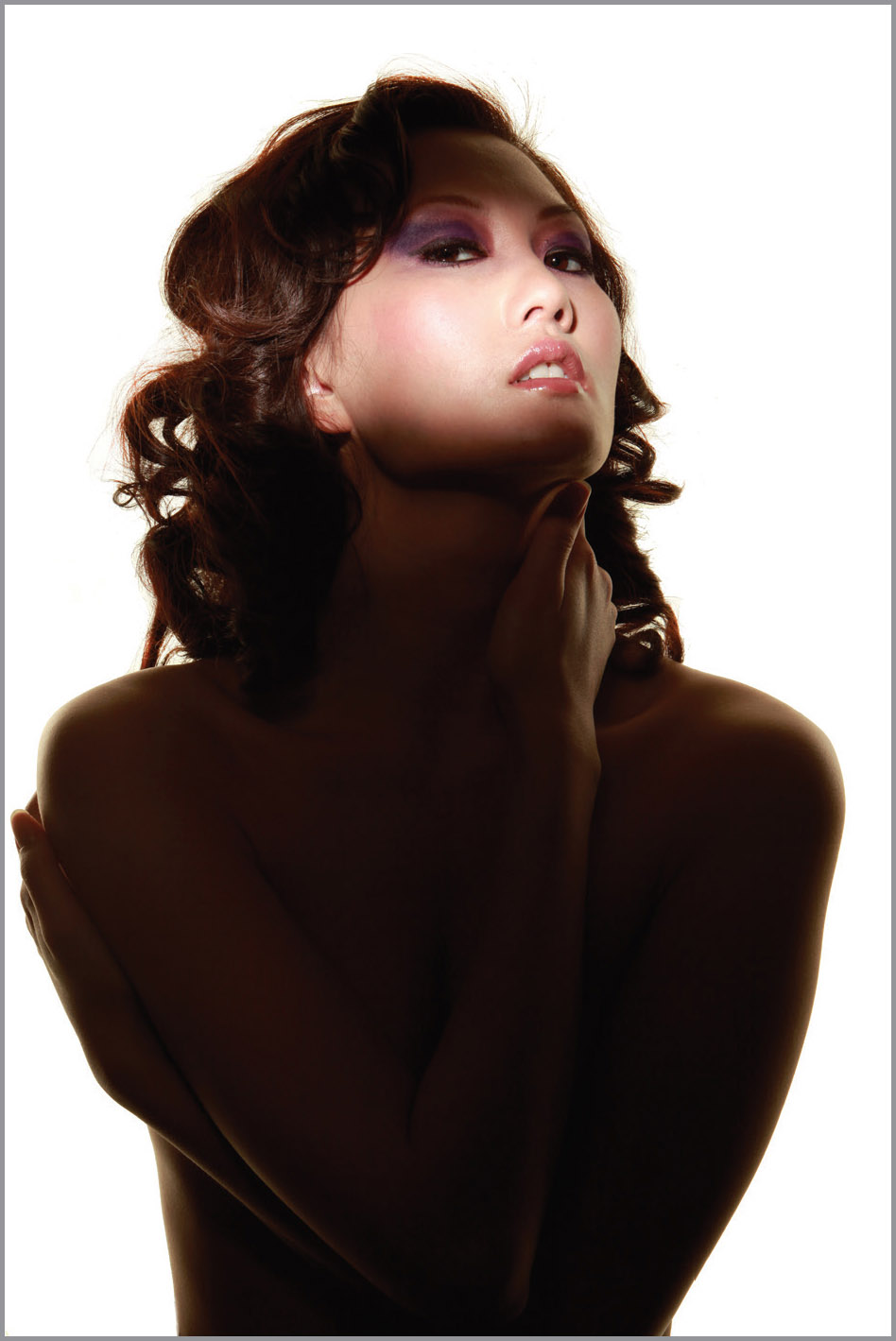
A rough shape can be very effective.
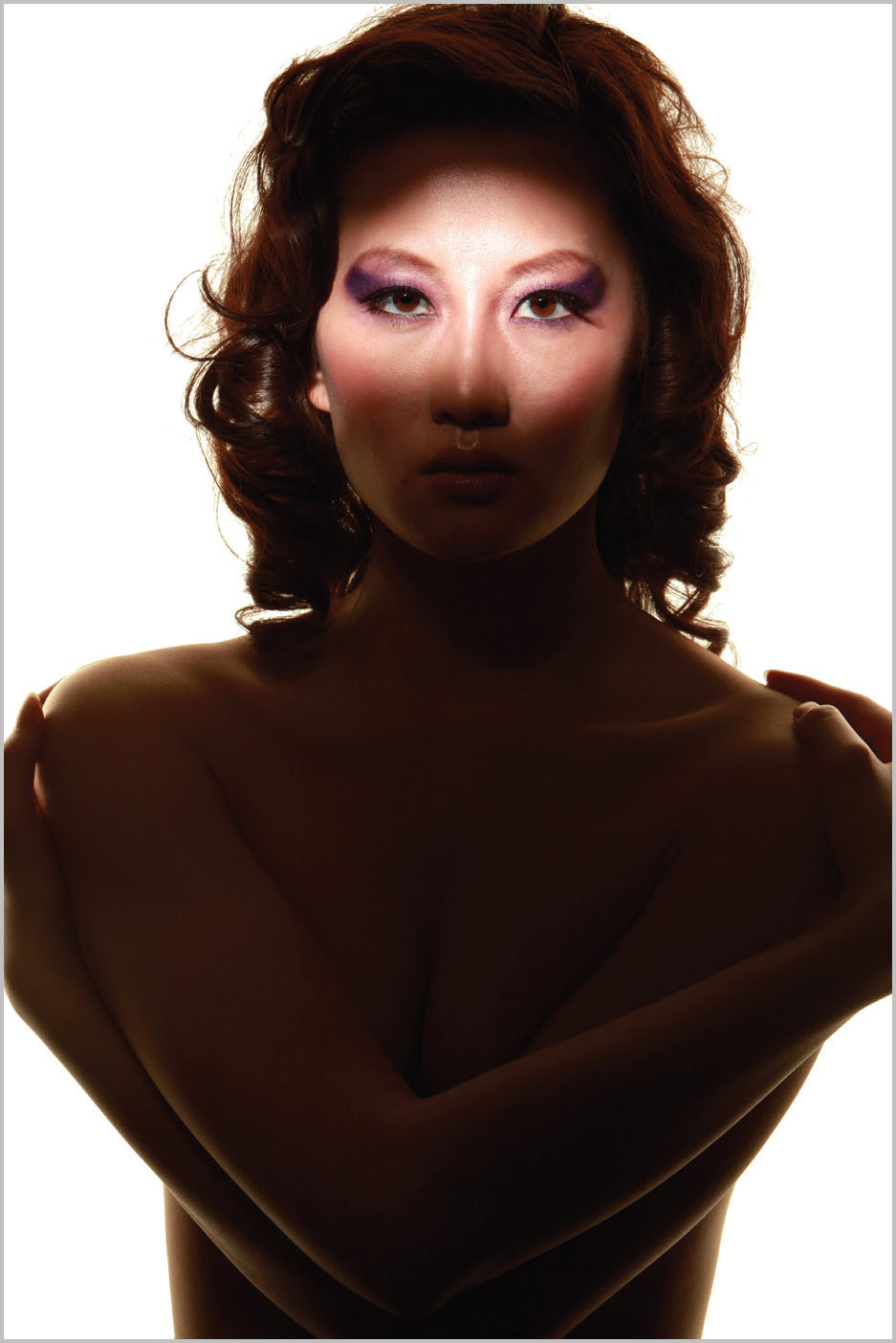
Varying the shape and position of the Cinefoil can easily change the look of a shot.